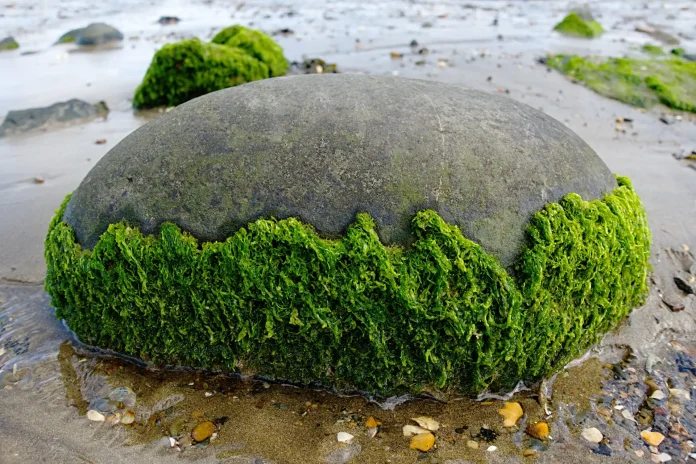Scientists have made a remarkable discovery that could revolutionize the agricultural field: identifying the first algae species containing a unique cell capable of fixing nitrogen from the air. This development of nitrogen fixing algae holds immense potential for engineering plants, which have the ability to meet their own nitrogen needs, reduce reliance on fertilizers, and promote a more sustainable future.
Nitrogen is the most essential element for plant growth, yet most plants cannot utilize atmospheric nitrogen (N₂) directly. They rely on nitrogen-fixing bacteria or nitrogen-rich fertilizers to convert N₂ into usable forms, such as ammonia. However, excessive fertilizer use creates environmental concerns, including water pollution and greenhouse gas emissions.
Nitroplast for Nitrogen Fixing Algae
The newly discovered cell, called a “nitroplast,” resides within the marine algae species Braarudosphaera bigelowii. Unlike traditional textbook knowledge that restricted nitrogen fixation to bacteria and archaea, this discovery reveals a game-changer: a eukaryote (organisms with complex cells, including plants and animals) possessing this essential capability.
The research team, led by ocean ecologist Jonathan Zehr from the University of California, Santa Cruz, delves deeper into the origins of the nitroplast. They believe it stemmed from a symbiotic relationship formed roughly 100 million years ago between an ancestor of the algae and a nitrogen fixing bacteria called UCYN-A. Over time, this partnership evolved, resulting in the integration of UCYN-A’s functionality into the algal cell as the nitroplast organelle.
Scientists define organelles based on two critical criteria: inheritance through host cell generations and dependence on host-provided proteins. The research team carefully observed the algae during cell division, confirming the nitroplast’s replication alongside the host cell, mirroring the behavior of other organelles.
Also: Green Roofs can help in sustainability by Mycorrhizak Fungi
Furthermore, the analysis revealed the nitroplast’s reliance on proteins provided by the algae. This organelle, constituting over 8% of the host cell’s volume, lacks essential proteins for photosynthesis and genetic material production. As Zehr explains in the study, “A lot of these proteins [from the alga] are just filling those gaps in metabolism.”
Studying the Secrets of the Algae
This breakthrough owes significantly to the dedication of Kyoko Hagino, a co-author from Kochi University in Japan. Her decade-long effort in perfecting the cultivation of the algae in a lab setting provided key opportunities for in-depth study.
Understanding the nitroplast’s interaction with its host cell opens doors for engineering crops equipped with their own nitrogen-fixing capabilities. Zehr highlights the impact: “The tricks that are involved in making this system work could be used in engineering land plants.”
The possible benefits are long lasting. Eva Nowack, a researcher specializing in symbiotic bacteria from Germany, expresses the excitement: “Crop yields are majorly limited by the availability of nitrogen. Having a nitrogen-fixing organelle in a crop plant would be, of course, fantastic.”
Check Out! Key Indicators That Expose Energy Security in Agriculture
However, introducing this vital ability into plants presents difficulties. Scientists would need to engineer plant cells to incorporate the genetic code for the nitroplast, ensuring the stable transfer of these genes across generations. As Nowack emphasizes, “That would be the most difficult thing to do.”
Despite the challenges, Jeffrey Elhai, a cell biologist at Virginia Commonwealth University, acknowledges the significance of this discovery: “It’s both a pleasure and very impressive to see this work build up to what is certainly a major stepping stone in understanding.”
The discovery of the nitrogen fixing algae and its unique nitroplast cell represents a monumental leap in agriculture. This newfound knowledge makes the way for the future research, potentially leading to the development of sustainable agricultural practices that minimize reliance on fertilizers and contribute to a greener future.



